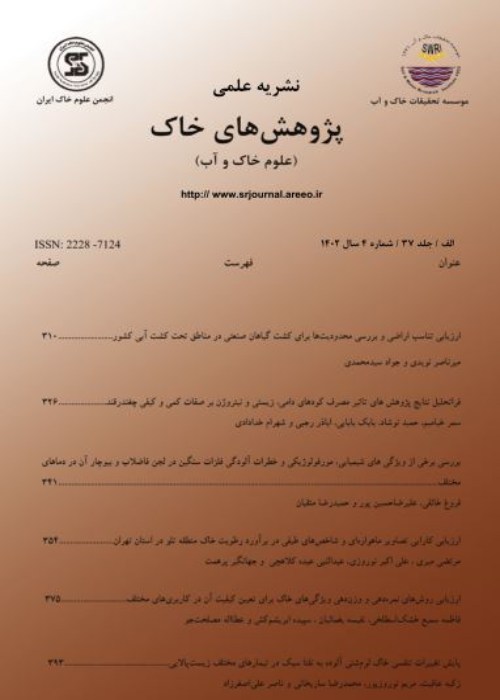Microbial Remediation of Petroleum Contaminated Soils and the Role of Rhizosphere in Microorganisms Efficiency
Abstract:
Oil contamination is one of the most common and usual kinds of pollution in aquatic and terrestrial ecosystems. One of the economical and effective methods for decreasing or eliminating oil contamination is using plants and microorganisms. Soils contain a wide variety of oil decomposing microorganisms، of which pseudomonad، Rhodocoous and Nocardia are the most important. To evaluate the effect of oil decomposing bacteria on bioremediation of oil contaminated soils with and without plant (the role of rhizosphere)، this research was conducted in greenhouse condition. Fifteen soil samples form depth of 0-30 cm were collected from around an oil refinery، where soils were exposed to oil contamination for a long time. Oil decomposing bacteria were isolated and purified from the collected soil samples، then their bioremediation efficiency was determined. A greenhouse experiment was conducted as completely randomized design using bacteria (4 levels)، plant (2 levels) and pollutant (4 levels) as variable factors. Sixty days after beginning of the pot experiment، wheat plants were cut and fresh and dry weight of their root and shoot and also the concentration of pollutants in soil were determined. The results indicated significant effects of bacteria، pollution، and their interactive effect on shoot fresh weight، as well as the effects of pollution and interaction of bacteria with pollution on shoot dry weight، with similar effects of pollution on fresh and dry weight of root. Pollution decreased the fresh and dry weight of root and shoot، while inoculation of bacteria improved root and shoot weight، due to elimination of pollutant. The effects of all treatments on pollutant concentration were significant. Planting and bacteria inoculation decreased pollutant concentration in soil significantly. Bacteria were more efficient than the plant in decreasing soil pollutant، and plant did not increase bacterial efficiency significantly. Thus، the difference between plant and plant+bacteria treatments was not significant.
Keywords:
Language:
Persian
Published:
Iranian Journal of Soil Research, Volume:28 Issue: 3, 2014
Pages:
573 to 584
magiran.com/p1359888
دانلود و مطالعه متن این مقاله با یکی از روشهای زیر امکان پذیر است:
اشتراک شخصی
با عضویت و پرداخت آنلاین حق اشتراک یکساله به مبلغ 1,390,000ريال میتوانید 70 عنوان مطلب دانلود کنید!
اشتراک سازمانی
به کتابخانه دانشگاه یا محل کار خود پیشنهاد کنید تا اشتراک سازمانی این پایگاه را برای دسترسی نامحدود همه کاربران به متن مطالب تهیه نمایند!
توجه!
- حق عضویت دریافتی صرف حمایت از نشریات عضو و نگهداری، تکمیل و توسعه مگیران میشود.
- پرداخت حق اشتراک و دانلود مقالات اجازه بازنشر آن در سایر رسانههای چاپی و دیجیتال را به کاربر نمیدهد.
دسترسی سراسری کاربران دانشگاه پیام نور!
اعضای هیئت علمی و دانشجویان دانشگاه پیام نور در سراسر کشور، در صورت ثبت نام با ایمیل دانشگاهی، تا پایان فروردین ماه 1403 به مقالات سایت دسترسی خواهند داشت!
In order to view content subscription is required
Personal subscription
Subscribe magiran.com for 70 € euros via PayPal and download 70 articles during a year.
Organization subscription
Please contact us to subscribe your university or library for unlimited access!


